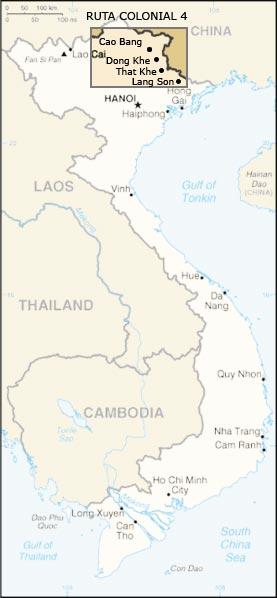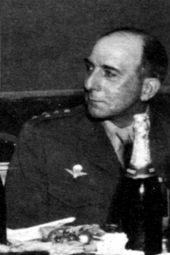Related Research Articles

The Maginot Line, named after the French Minister of War André Maginot, is a line of concrete fortifications, obstacles and weapon installations built by France in the 1930s to deter invasion by Nazi Germany and force them to move around the fortifications. It was impervious to most forms of attack; consequently, the Germans invaded through the Low Countries in 1940, passing it to the north. The line, which was supposed to be fully extended further towards the west to avoid such an occurrence, was finally scaled back in response to demands from Belgium. Indeed, Belgium feared it would be sacrificed in the event of another German invasion. The line has since become a metaphor for expensive efforts that offer a false sense of security.

The Battle of Điện Biên Phủ was a climactic confrontation of the First Indochina War that took place between 13 March and 7 May 1954. It was fought between the French Union's colonial Far East Expeditionary Corps and Viet Minh communist revolutionaries. The United States was officially not a party to the war, but it was secretly involved by providing financial and material aid to the French Union, which included CIA-contracted American personnel participating in the battle. The People's Republic of China and the Soviet Union similarly provided vital support to the Viet Minh, including most of their artillery and ammunition.

The Battle of Route Coloniale 4, also called the Autumn-Winter Border Campaign by the Viet Minh, was a battle of the First Indochina War. It took place along Route Coloniale 4, a road used to supply the French military base at Cao Bằng. French military traffic along the road had previously been subject to an ongoing series of ambushes during 1947–1949.

The First Indochina War was fought between France and Việt Minh, and their respective allies, from 19 December 1946 until 20 July 1954. Việt Minh was led by Võ Nguyên Giáp and Hồ Chí Minh. Most of the fighting took place in Tonkin in Northern Vietnam, although the conflict engulfed the entire country and also extended into the neighboring French Indochina protectorates of Laos and Cambodia.

A blockhouse is a small fortification, usually consisting of one or more rooms with loopholes, allowing its defenders to fire in various directions. It is usually an isolated fort in the form of a single building, serving as a defensive strong point against any enemy that does not possess siege equipment or, in modern times, artillery, air force or cruise missiles. A fortification intended to resist these weapons is more likely to qualify as a fortress or a redoubt, or in modern times, be an underground bunker. However, a blockhouse may also refer to a room within a larger fortification, usually a battery or redoubt.
The Battle of Vĩnh Yên which occurred from 13 to 17 January 1951, was a major engagement in the First Indochina War between the French Union and the Việt Minh. The French Union forces, led by World War II hero Jean de Lattre de Tassigny, inflicted a decisive defeat on the Việt Minh forces, which were commanded by Võ Nguyên Giáp. The victory marked a turn in the tide of the war, which was previously characterized by a number of Việt Minh victories.
The Battle of Mạo Khê, occurring from March 23 to March 28, 1951, was a significant engagement in the First Indochina War between the French Union and the Việt Minh. The French Union forces, led by World War II hero Jean de Lattre de Tassigny, inflicted a defeat on Việt Minh forces, which were commanded by General Võ Nguyên Giáp. The French Union victory, however, was not decisive and the Việt Minh would attack again shortly afterwards.
Phủ Lý is the capital city of Hà Nam Province of Vietnam 60 km south of Hanoi on the river Đáy.

Operation Lorraine was a French military operation of the First Indochina War.
The Battle of Hòa Bình was fought during the First Indochina War. It occurred from 10 November 1951 to 25 February 1952, when French Union forces attempted to lure the Việt Minh out into the open and to force it to fight on French terms.

The Battle of Nà Sản was fought between French Union forces and the Nationalist forces of the Việt Minh at Nà Sản, Sơn La Province, during the First Indochina War for control of the T’ai region.

Operation Mouette was an operation in 1953 by the French Army in Northern Vietnam during the First Indochina War. It was launched on October 15 in an attempt to locate and destroy Viet-Minh Chu Luc troops operating under the command of Võ Nguyên Giáp around the area of Phu Nho Quan, south of the Red River Delta. Following the establishment of a French camp in the area, various troops were dispatched to engage the Viet-Minh forces. The operation was ended and the French withdrew by November 7, claiming approximately 1,000 enemy combatants killed, twice as many wounded, and 181 captured as well as a substantial quantity of weapons and ammunition.
The 308th Infantry Division is a division of the People's Army of Vietnam (PAVN), first formed in August 1950 in southern China from the previous Regimental Group 308.

The Battle of Muong Khoua took place between April 13 and May 18, 1953, in northern Laos during the First Upper Laos Campaign in the French Indochina War. A garrison of a dozen French and 300 Laotian troops occupied a fortified outpost in the hills above the village of Muong Khoua, across the Vietnamese border from Điện Biên Phủ. Muong Khoua was among the last French outposts in northern Laos following the decision of the French High Command to string isolated garrisons through the region in order to buy time to fortify the major Laotian cities against Việt Minh attack.

The Battle of the Day River took place between late May and early June 1951, around the Day River Delta in the Gulf of Tonkin. Part of the First Indochina War, the battle was the first conventional campaign of Võ Nguyên Giáp, and saw his Việt Minh People's Army of Vietnam (VPA) forces tackle the Catholic-dominated region of the Delta in order to break its resistance to Việt Minh infiltration. On the back of two defeats at similar ventures through March and April that year, Giap led three divisions in a pattern of guerrilla and diversion attacks on Ninh Bình, Nam Định, Phủ Lý and Phat Diem beginning on May 28 which saw the destruction of commando François, a naval commando.
The 320th Division or Đồng Bằng Division is a formation and one of the six original "Steel and Iron Divisions" of the People's Army of Vietnam (PAVN). It was established in January 1951.

The 1945–1946 War in Vietnam, codenamed Operation Masterdom by the British, and also known as the Southern Resistance War by the Vietnamese, was a post–World War II armed conflict involving a largely British-Indian and French task force and Japanese troops from the Southern Expeditionary Army Group, versus the Vietnamese communist movement, the Viet Minh, for control of the southern half of the country, after the unconditional Japanese surrender.

The railway system in Vietnam is owned and operated by the state-owned Vietnam Railways. The principal route, the single track North-South Railway running between Hanoi and Ho Chi Minh City, accounts for 1,726 kilometres (1,072 mi) of the network's total length of 2,600 kilometres (1,600 mi). The national railway network uses mainly metre gauge, although there are several standard gauge and mixed gauge lines in the north of the country.
The Battle of Nghĩa Lộ, also called Ly Thuong Kiet Campaign by Việt Minh, was fought between the French army and the Việt Minh during the First Indochina War. Both general Giap and de Lattre waited eagerly for the battle due to the postponement that occurred when Giap's attack along the Day River were driven back in June 1951. Since Giap was the one controlling the tempo of this war for months, it took a huge turn during the pause after his defeat causing his military situation to become unstable. On 3 October, the Việt Minh 312th Division launched an attack on French forces in the town of Nghĩa Lộ and its vicinity which was led by the general Giap. This attack on Nghĩa Lộ occurred 95 miles west of Hanoi and only 65 miles past that of the western de Lattre Line. This village was the utmost importance to de Lattre because it served as the capital of the T'ai natives which had very strong ties with the French. The first attacked was carried out by two regiments of the 312th Division to the surrounding posts that acted as the main defense of the town in order to maintain military control. Since de Lattre was not present at the time, General Salan took the reins of the situation and quickly reinforced the surrounding posts with paratroopers carried by parachutes to fortify defenses. This quick strategy by General Salan was looked upon the saving grace of this battle since it repelled a secondary attack by two regiments of the 312th Division that same night. Additional reinforcements occurred during the 4th of October along with air support which led to General Giap to call off his attack which they then fled across the Red River. A year later on 17 October, the Việt Minh launched another attack on Nghĩa Lộ and succeeded in driving out the remaining French from the area.
The Battle of Nghĩa Lộ was a battle of the First Indochina War. In the fall of 1952 the French army encountered its most serious crisis since the disasters near the Chinese border at Cao Bằng, Đông Khê and RC 4 occurred in 1949 and 1950. The Battle of Nghĩa Lộ was the opening salvo in a series of offenses and counter-offenses in late 1952 during the First Indochina War. It was part of a Việt Minh offensive in the T’ai region of Tonkin in the vicinity of the Black River. The French countered with Operation Lorraine to attack Việt Minh rear supply bases in an attempt to cut off the offensive. The Việt Minh did not cease or divert the offensive to protect its supply bases. The Việt Minh continued its offensive attack against Nà Sản where there was an outpost and a short airstrip, both guarded by the French army. This series of battles lasted for three months between October 1952 and December 1952. These actions and the Việt Minh successes set the stage for the subsequent Invasion of Laos in April 1953.
References
- 1 2 Windrow, Martin (2004). The Last Valley: Dien Bien Phu and the French Defeat in Vietnam. Orion Publishing Group. ISBN 0-297-84671-X.